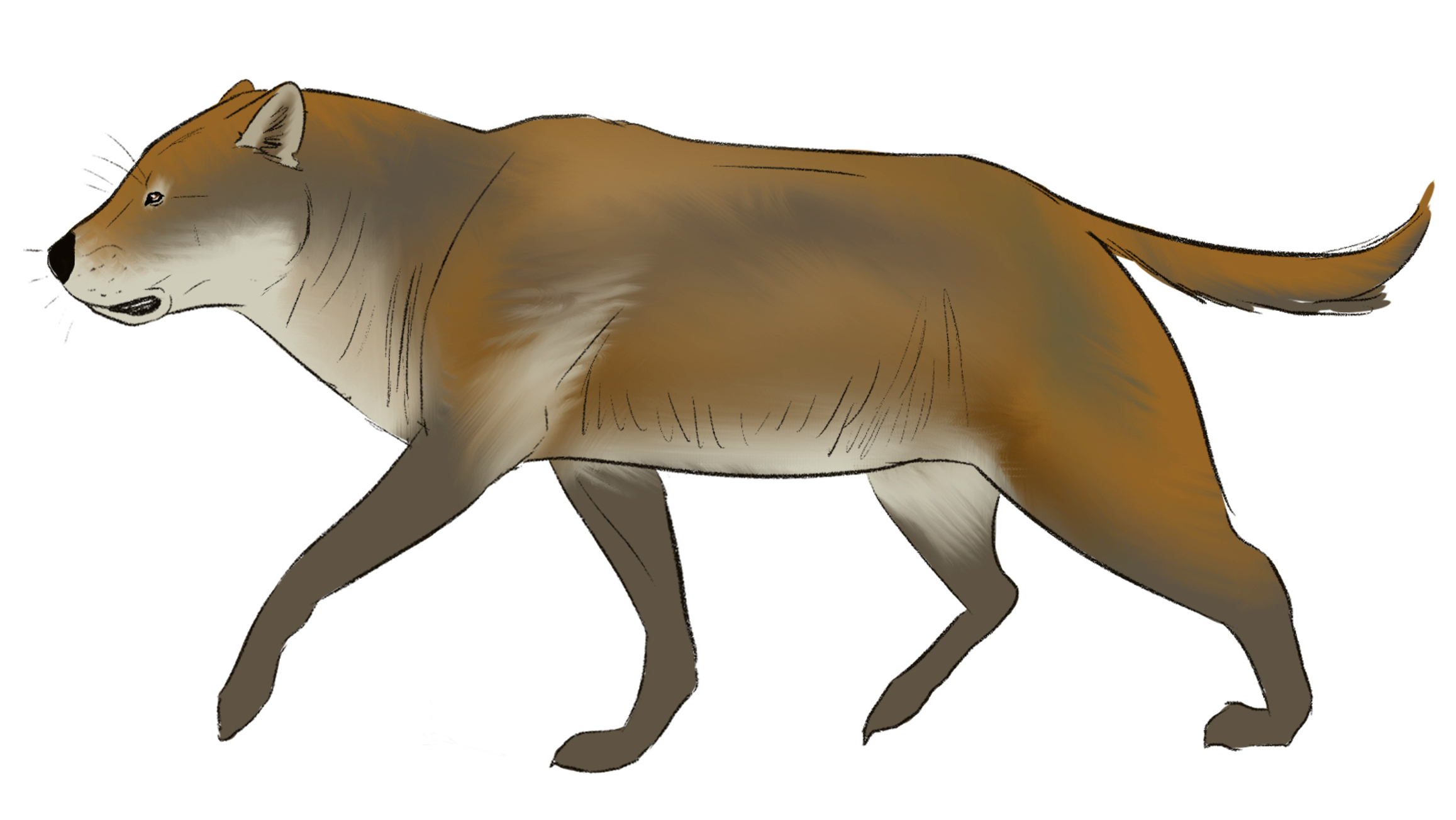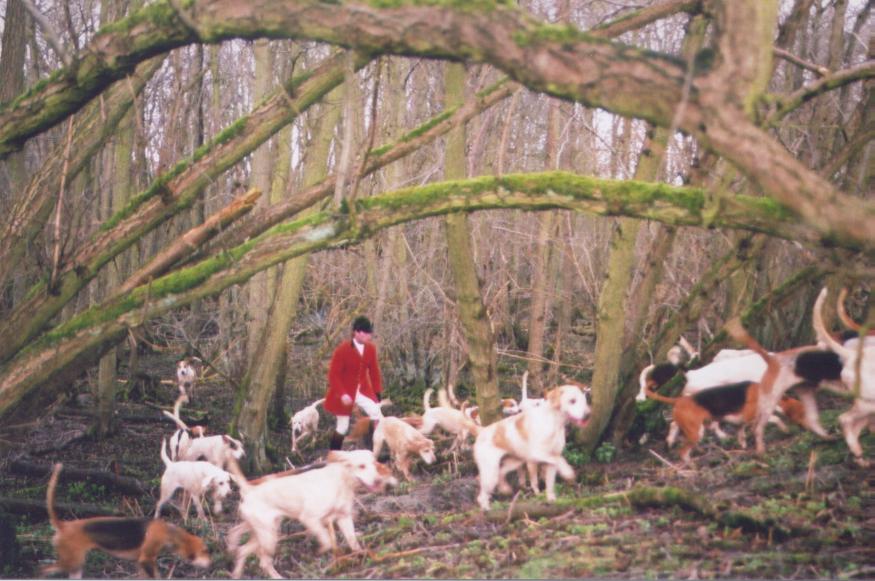|
Cormocyon
''Cormocyon'' is an extinct genus of borophagine canid native to North America. It lived from the Oligocene to the Early Miocene The Early Miocene (also known as Lower Miocene) is a sub-epoch of the Miocene epoch (geology), Epoch made up of two faunal stage, stages: the Aquitanian age, Aquitanian and Burdigalian stages. The sub-epoch lasted from 23.03 ± 0.05 annum, Ma to ..., 30.8—20.6 Mya, existing for about . It is regarded as a primitive, transitional member of the Borophagini tribe. References *''The Terrestrial Eocene-Oligocene Transition in North America'' By Donald R. Prothero and Robert J. Emry *Flynn, J.J., 1998. Early Cenozoic Carnivora ("Miacoidea"). pp. 110–123 ''in'' C.M. Janis, K.M. Scott, and L.L. Jacobs (''eds.'') ''Evolution of Tertiary Mammals of North America. Volume 1: Terrestrial Carnivores, Ungulates, and Ungulatelike Mammals.'' Cambridge University Press, Cambridge. Oligocene canids Miocene canids Oligocene genus extinctions Cenoz ... [...More Info...] [...Related Items...] OR: [Wikipedia] [Google] [Baidu] |
Borophaginae
The extinct Borophaginae form one of three subfamilies found within the canid family. The other two canid subfamilies are the extinct Hesperocyoninae and extant Caninae. Borophaginae, called "bone-crushing dogs", were endemic to North America during the Oligocene to Pliocene and lived roughly 34—2.5 million years ago, existing for about . Origin The Borophaginae descended from the subfamily Hesperocyoninae. The earliest and most primitive borophagine is the genus '' Archaeocyon'', which is a small fox-sized animal mostly found in the fossil beds in western North America. The borophagines soon diversified into several major groups. They evolved to become considerably larger than their predecessors, and filled a wide range of niches in late Cenozoic North America, from small omnivores to powerful, bear-sized carnivores, such as '' Epicyon''. Species There are 66 identified borophagine species, including 18 newly identified species that range from the Orellan to Blancan ag ... [...More Info...] [...Related Items...] OR: [Wikipedia] [Google] [Baidu] |
Borophagini
Borophagini is a clade or tribe of the subfamily Borophaginae. This is an extinct group of terrestrial canids that were endemic and widespread throughout North America and Central America which lived during the Geringian stage of the Oligocene epoch to the Zanclean age of the Early Pliocene living 30.8—3.6 Mya existing approximately . Biology Borophagini were short-faced, heavy-jawed canids, usually massive in size. They were primarily carnivores but dentition demonstrates omnivore traits. Taxonomy ''Borophagini'' was named by Simpson (1945) redited to Simpson because he named Borophaginae It was assigned to Borophaginae by Wang et al. (1999) and Wang et al. (2004). Subtaxa and sister taxa The subtaxa or subtribes are: '' Aelurodontina'', '' Borophagina'', and '' Cynarctina''. '' Phlaocyonini'' is a sister taxon. Genera * Tribe †Borophagini (30—3 Ma) ** †'' Cormocyon'' (30—20 Ma) ** †'' Desmocyon'' (25—16 Ma) ** †'' Metatomarctus'' (19—16 Ma) ** †'' E ... [...More Info...] [...Related Items...] OR: [Wikipedia] [Google] [Baidu] |
American Museum Of Natural History
The American Museum of Natural History (AMNH) is a natural history museum on the Upper West Side of Manhattan in New York City. Located in Theodore Roosevelt Park, across the street from Central Park, the museum complex comprises 21 interconnected buildings housing 45 permanent exhibition halls, in addition to a planetarium and a library. The museum collections contain about 32 million specimens of plants, animals, fungi, fossils, minerals, rocks, meteorites, human remains, and human cultural artifacts, as well as specialized collections for frozen tissue and genomic and astrophysical data, of which only a small fraction can be displayed at any given time. The museum occupies more than . AMNH has a full-time scientific staff of 225, sponsors over 120 special field expeditions each year, and averages about five million visits annually. The AMNH is a private 501(c)(3) organization. The naturalist Albert S. Bickmore devised the idea for the American Museum of Natural History in 1 ... [...More Info...] [...Related Items...] OR: [Wikipedia] [Google] [Baidu] |
Xiaoming Wang (paleontologist)
Xiaoming Wang is a Chinese-born American vertebrate paleontologist and geologist who lives and teaches in the United States. Areas of expertise Professor Wang specializes in the fossil evolution, systematics, and phylogeny of mammals of the Cenozoic. He has researched the biostratigraphy of Inner Mongolia and Asia as a whole, the geochronology of Asia, paleoenvironments of the Tibetan Plateau, and mammalian migrations between Eurasia and North America. Wang has also investigated the systematics and phylogeny of canids (dogs and their kin) as well as Late Eocene through Pleistocene fossil mammals of Southern California and Mexico. ''(see Natural History Museum of LA)''. Education * B.S. Nanjing University, Nanjing, Jiangsu province, PRC. *Chinese Academy of Sciences, Institute of Vertebrate Paleontology and Paleoanthropology in Beijing, PRC. * M.A. and Ph.D., University of Kansas, Lawrence, Kansas, United States. * Post-doctoral work, American Museum of Natural History. * ... [...More Info...] [...Related Items...] OR: [Wikipedia] [Google] [Baidu] |
Canidae
Canidae (; from Latin, ''canis'', "dog") is a family (biology), biological family of caniform carnivorans, constituting a clade. A member of this family is also called a canid (). The family includes three subfamily, subfamilies: the Caninae, and the extinct Borophaginae and Hesperocyoninae. The Caninae are known as canines, and include Dog, domestic dogs, Wolf, wolves, coyotes, raccoon dogs, Fox, foxes, jackals and other species. Canids are found on all continents except Antarctica, having arrived independently or accompanied by Human, human beings over extended periods of time. Canids vary in size from the gray wolf to the fennec fox. The body forms of canids are similar, typically having long muzzles, upright ears, teeth adapted for cracking bones and slicing flesh, long legs, and bushy tails. They are mostly social animals, living together in family units or small groups and behaving co-operatively. Typically, only the dominant pair in a group breeds and a litter of young ... [...More Info...] [...Related Items...] OR: [Wikipedia] [Google] [Baidu] |
North America
North America is a continent in the Northern Hemisphere, Northern and Western Hemisphere, Western hemispheres. North America is bordered to the north by the Arctic Ocean, to the east by the Atlantic Ocean, to the southeast by South America and the Caribbean Sea, and to the south and west by the Pacific Ocean. The region includes Middle America (Americas), Middle America (comprising the Caribbean, Central America, and Mexico) and Northern America. North America covers an area of about , representing approximately 16.5% of Earth's land area and 4.8% of its total surface area. It is the third-largest continent by size after Asia and Africa, and the list of continents and continental subregions by population, fourth-largest continent by population after Asia, Africa, and Europe. , North America's population was estimated as over 592 million people in list of sovereign states and dependent territories in North America, 23 independent states, or about 7.5% of the world's popula ... [...More Info...] [...Related Items...] OR: [Wikipedia] [Google] [Baidu] |
Oligocene
The Oligocene ( ) is a geologic epoch (geology), epoch of the Paleogene Geologic time scale, Period that extends from about 33.9 million to 23 million years before the present ( to ). As with other older geologic periods, the rock beds that define the epoch are well identified but the exact dates of the start and end of the epoch are slightly uncertain. The name Oligocene was coined in 1854 by the German paleontologist Heinrich Ernst Beyrich from his studies of marine beds in Belgium and Germany. The name comes from Ancient Greek (''olígos'') 'few' and (''kainós'') 'new', and refers to the sparsity of Neontology, extant forms of Mollusca, molluscs. The Oligocene is preceded by the Eocene Epoch and is followed by the Miocene Epoch. The Oligocene is the third and final epoch of the Paleogene Period. The Oligocene is often considered an important time of transition, a link between the archaic world of the tropical Eocene and the more modern ecosystems of the Miocene. Major chang ... [...More Info...] [...Related Items...] OR: [Wikipedia] [Google] [Baidu] |
Early Miocene
The Early Miocene (also known as Lower Miocene) is a sub-epoch of the Miocene epoch (geology), Epoch made up of two faunal stage, stages: the Aquitanian age, Aquitanian and Burdigalian stages. The sub-epoch lasted from 23.03 ± 0.05 annum, Ma to 15.97 ± 0.05 Ma (million years ago). It was preceded by the Oligocene epoch. As the climate started to get cooler, the landscape started to change. New mammals evolved to replace the extinct animals of the Oligocene epoch. The first members of the hyena and weasel family started to evolve to replace the extinct ''Hyaenodon'', entelodonts and bear-dogs. The chalicotheres survived the Oligocene epoch. A new genus of entelodont called ''Daeodon'' evolved in order to adapt to the new habitats and hunt the new prey animals of the Early Miocene epoch; it quickly became the top predator of North America. But it became extinct due to competition from ''Amphicyon'', a newcomer from Eurasia. ''Amphicyon'' bested ''Daeodon'' because the bear-dog's la ... [...More Info...] [...Related Items...] OR: [Wikipedia] [Google] [Baidu] |
Annum
A year is a unit of time based on how long it takes the Earth to orbit the Sun. In scientific use, the tropical year (approximately 365 solar days, 5 hours, 48 minutes, 45 seconds) and the sidereal year (about 20 minutes longer) are more exact. The modern calendar year, as reckoned according to the Gregorian calendar, approximates the tropical year by using a system of leap years. The term 'year' is also used to indicate other periods of roughly similar duration, such as the lunar year (a roughly 354-day cycle of twelve of the Moon's phasessee lunar calendar), as well as periods loosely associated with the calendar or astronomical year, such as the seasonal year, the fiscal year, the academic year, etc. Due to the Earth's axial tilt, the course of a year sees the passing of the seasons, marked by changes in weather, the hours of daylight, and, consequently, vegetation and soil fertility. In temperate and subpolar regions around the planet, four seasons are generally ... [...More Info...] [...Related Items...] OR: [Wikipedia] [Google] [Baidu] |
Oligocene Canids
The Oligocene ( ) is a geologic epoch of the Paleogene Period that extends from about 33.9 million to 23 million years before the present ( to ). As with other older geologic periods, the rock beds that define the epoch are well identified but the exact dates of the start and end of the epoch are slightly uncertain. The name Oligocene was coined in 1854 by the German paleontologist Heinrich Ernst Beyrich from his studies of marine beds in Belgium and Germany. The name comes from Ancient Greek (''olígos'') 'few' and (''kainós'') 'new', and refers to the sparsity of extant forms of molluscs. The Oligocene is preceded by the Eocene Epoch and is followed by the Miocene Epoch. The Oligocene is the third and final epoch of the Paleogene Period. The Oligocene is often considered an important time of transition, a link between the archaic world of the tropical Eocene and the more modern ecosystems of the Miocene. Major changes during the Oligocene included a global expansion of gras ... [...More Info...] [...Related Items...] OR: [Wikipedia] [Google] [Baidu] |
Miocene Canids
The Miocene ( ) is the first geological epoch of the Neogene Period and extends from about (Ma). The Miocene was named by Scottish geologist Charles Lyell; the name comes from the Greek words (', "less") and (', "new") and means "less recent" because it has 18% fewer modern marine invertebrates than the Pliocene has. The Miocene followed the Oligocene and preceded the Pliocene. As Earth went from the Oligocene through the Miocene and into the Pliocene, the climate slowly cooled towards a series of ice ages. The Miocene boundaries are not marked by distinct global events but by regionally defined transitions from the warmer Oligocene to the cooler Pliocene Epoch. During the Early Miocene, Afro-Arabia collided with Eurasia, severing the connection between the Mediterranean and Indian Oceans, and allowing the interchange of fauna between Eurasia and Africa, including the dispersal of proboscideans and hominoids into Eurasia. During the late Miocene, the connections between the ... [...More Info...] [...Related Items...] OR: [Wikipedia] [Google] [Baidu] |
Oligocene Genus Extinctions
The Oligocene ( ) is a geologic epoch of the Paleogene Period that extends from about 33.9 million to 23 million years before the present ( to ). As with other older geologic periods, the rock beds that define the epoch are well identified but the exact dates of the start and end of the epoch are slightly uncertain. The name Oligocene was coined in 1854 by the German paleontologist Heinrich Ernst Beyrich from his studies of marine beds in Belgium and Germany. The name comes from Ancient Greek (''olígos'') 'few' and (''kainós'') 'new', and refers to the sparsity of extant forms of molluscs. The Oligocene is preceded by the Eocene Epoch and is followed by the Miocene Epoch. The Oligocene is the third and final epoch of the Paleogene Period. The Oligocene is often considered an important time of transition, a link between the archaic world of the tropical Eocene and the more modern ecosystems of the Miocene. Major changes during the Oligocene included a global expansion of grass ... [...More Info...] [...Related Items...] OR: [Wikipedia] [Google] [Baidu] |








